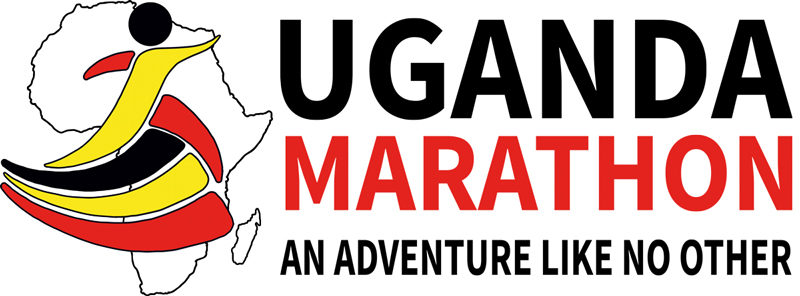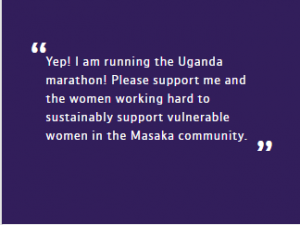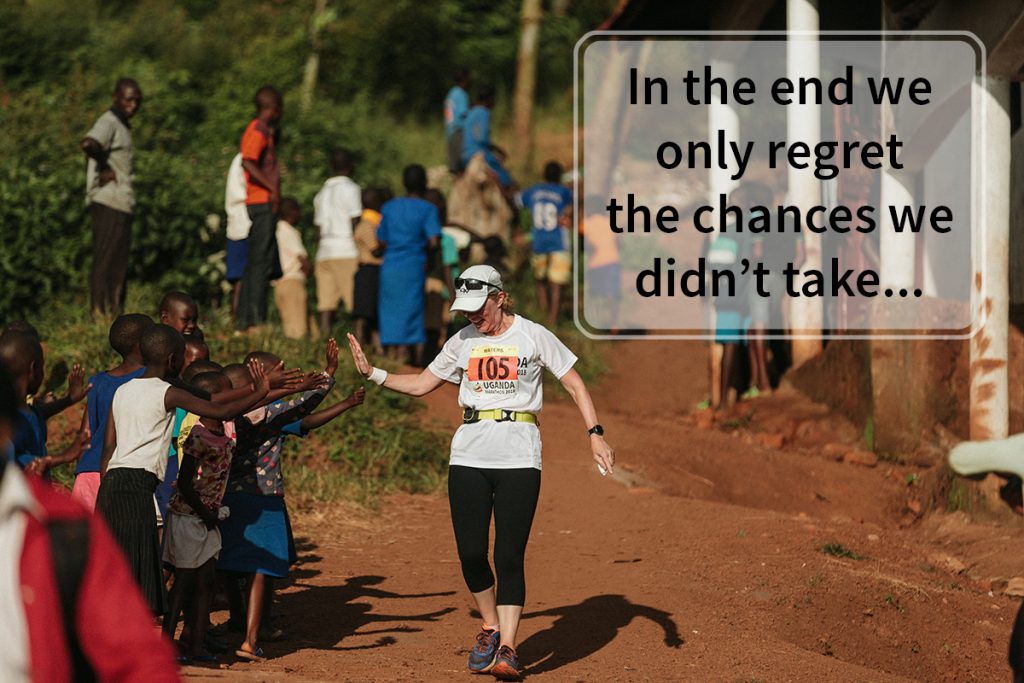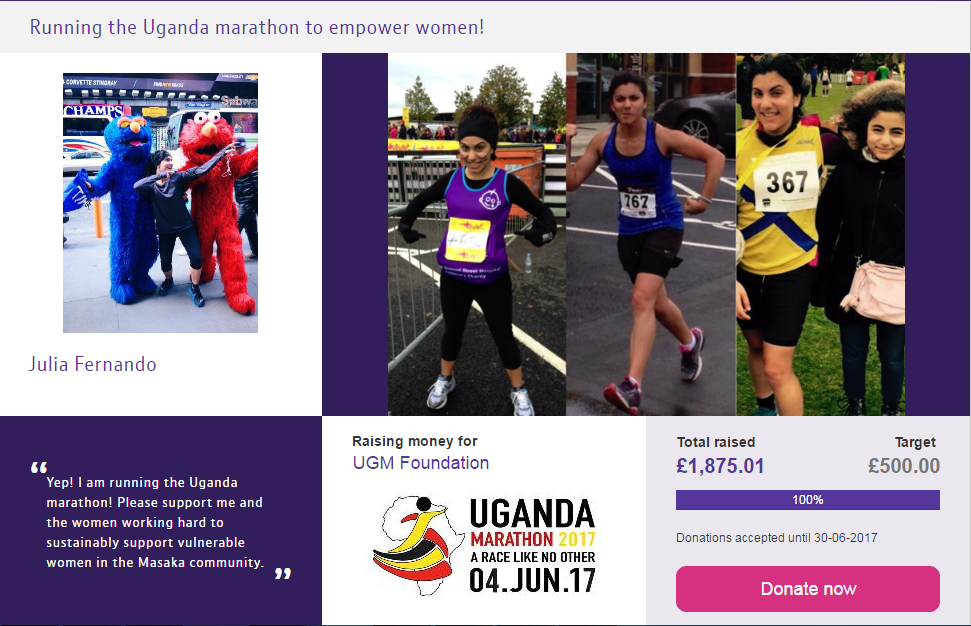
Welcome to the Uganda Marathon Runners’ Blog! Our series of blogs dedicated to our participants preparing to take part in this year’s event. Every Sunday, we’ll share new tips to help in your preparations for the 7-Day adventure, from training tips to fundraising and travel advice.
Written by a former participant, these blogs are all about helping our group of 2018 runners – please feel free to get in touch if you have questions or topic suggestions – we’d love to help!
Following our posts over the last fortnight about kicking off your training and fundraising, this week’s blog is all about helping you, our amazing runners, to set up your online fundraising pages.
First, we’ll run through the process of setting up your page. Then, we’ll share some top tips to make it awesome!
Setting up your fundraising page
Once Szilvia has confirmed your Priority Project, you”ll be set to start building your page on BT MyDonate.
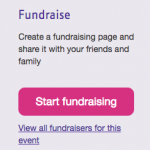
1. Go to the Uganda International Marathon 2017 event page on BT-MyDonate by clicking here. Then, click on the ‘Start Fundraising’ button (pictured right).
2. Follow the on-screen instructions to create your personal login.
3. It’s time to get creative and make your page personal! We’ve got more tips on this in the second half of this blog, but in summary aim to:
- Give it a catchy title and summary
- Write a punchy description about you, your challenge and a touching description of the project you’re supporting
- Write a personal thank you email message to give it all that extra personal touch!
4. Email Szilvia with your fundraising page web address to complete the process.
And then, boom! – you’re ready for those donations to start rolling in!
Our Top Tips for making your page inspirational!
Once you’ve set up your page, you want to make it as appealing and engaging as possible to encourage people to sponsor you once they visit your page.
Here are some of our top tips for creating a brilliant page…
1. Short, sweet and informative, but also PERSONAL
When writing the text for your page (ie. title, header & description), try to keep them short and snappy to encourage people to read them. If it’s too long, people may be less likely to read it, especially if they can only spare a few minutes to look at your page.
However, it’s a balancing act of keeping it informative enough that people who don’t know what you’re doing (or why) can still understand the challenge you’ve undertaken. Think old friends who spot your page on social media, or friends of friends hearing about your exciting challenge, who may have never met you, but were inspired by what your mutual friend said. You want your page to be informative enough to encourage them to donate.
Most of all, it’s key to make what you write personal. Tell your Uganda Marathon story. Write about your challenge and how difficult it will be for you. Show your enthusiasm, passion, excitement and endorsement for the project/cause. An emotionally driven story will always be more appealing to your readers than a copy and pasted project description from us, and will help you fundraise more as people are touched by what they read.
Click here to see the full description from Julia’s page.
2. Use facts and figures to contextualize
Use specific detail to help the reader identify the magnitude of your challenge and scale of the positive impact it will have. For example, ‘26.2 miles’, ’30-degree heat’, ‘running on the Equator’, ‘meeting the community you’re helping’. Also, it’s great to mention ‘100% of fundraising’ is going to the Charity Projects as this reassures donors all their money is going to a good cause!
If you can, also include what the overall fundraising will contribute towards, or what individuals donations can buy for the community as people will understand then exactly how they’re money is helping. Drop us a message if you’d like some specific examples from your Priority Project.
3. Set a target
There’s no minimum target with our fundraising, but by setting a personal target on your page, it can massively boost your fundraising, as donors will want to help you reach your target.
And if you reach your target? Don’t be afraid to put it up, as this will encourage further donations from sponsors. Similarly, when you’re approaching the target, be sure to shout about it – this will spur on your sponsorship more and encourage donations.
4. Use picture to support your story
Last, but by far least, use pictures to support your story. Visuals will help readers to more easily engage with your page and they’ll find it more appealing. As a rule, use some pictures of yourself (to make it personal) and some pictures of the challenge (to help your reader understand what you’re doing).
This page by a former participant is a great example! The photos themselves tell a story: what project they chose, their training, arriving in Uganda and running the event on Race Day…
See page 38 of the Runner Handbook for some links to photos you can use, from the projects, Race Day and 7-Day Adventure in general. Plus there are some extra tips on setting up your page, training and fundraising in general!
Feel free to get in touch if there’s anything we can help with. Until our next post, have a great week! 🙂
